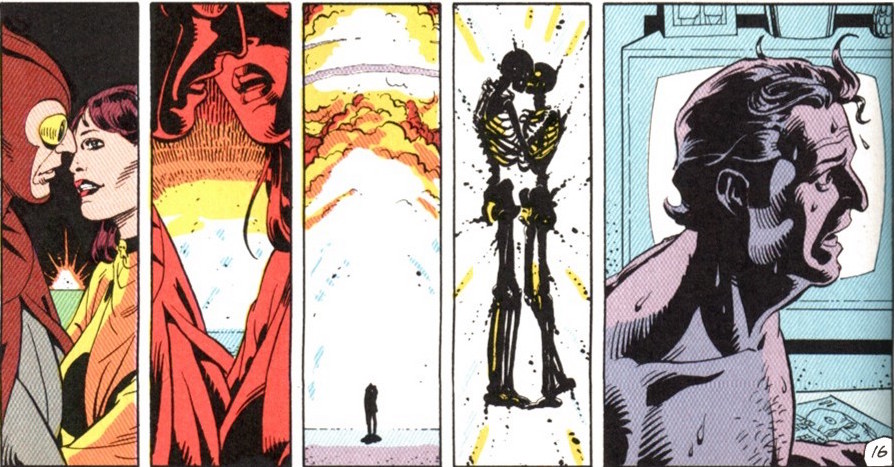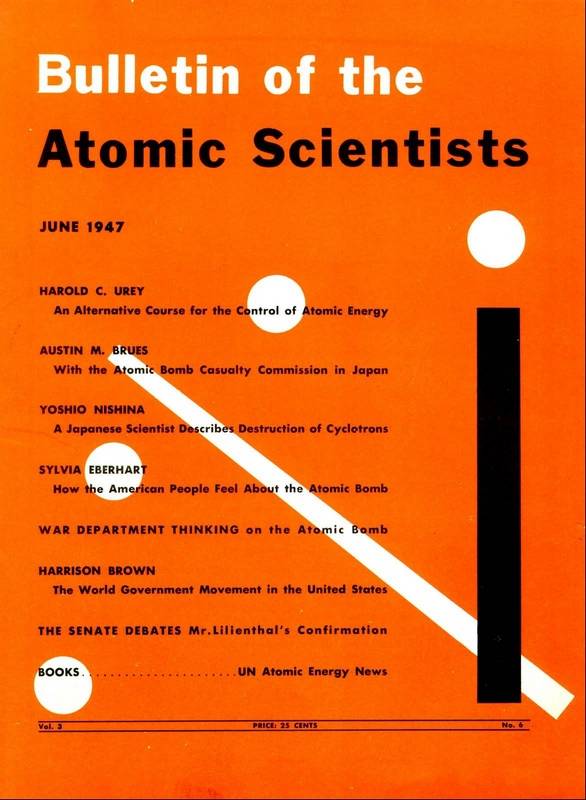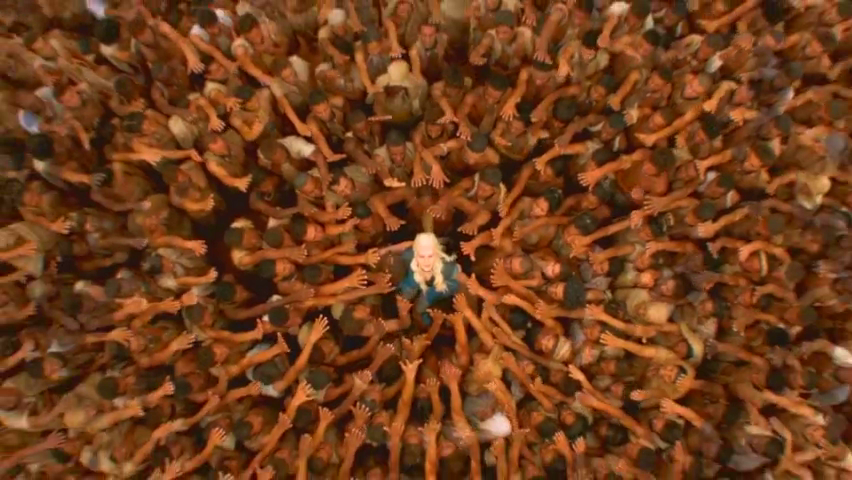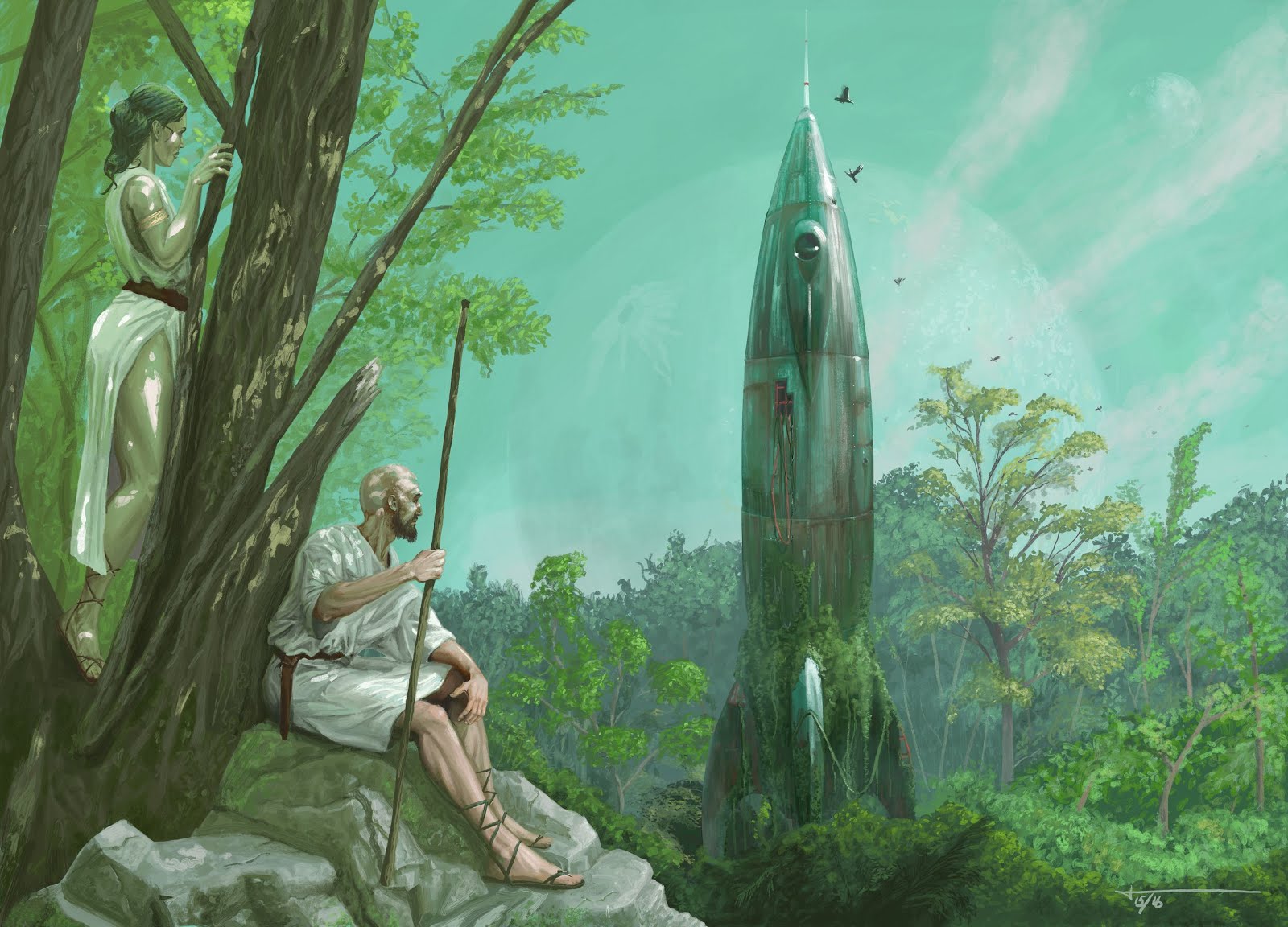The Wreckage of Love, Our Regard Lies White and Broken (The Last War in Albion Book Two Part Twenty-Nine: Apocalypse)
Previously in The Last War in Albion: Watchmen seemed not born so much as ground like pigment from its time; something that could only possibly have been created by Alan Moore and Dave Gibbons in 1986, at that point in their career, out of the specific interests they had at the time.
 |
| Figure 947: Eroticized war in Watchmen. (Written by Alan Moore, art by Dave Gibbons and John Higgins, from Watchmen #7, 1986) |
Moore has often made the joke that Watchmen was the result of a “bad mood” that he was in during the period. This is by and large understating things. In interviews from the time, Moore seems genuinely convinced that the world is going to end, certainly during his children’s lifetime, if not during his, and probably in some sort of nuclear explosion. In one interview, for instance, he notes that “in forty years the rain forests will be gone. If the rain forests are gone, we can’t breathe. Simple as that. There’s nothing that’s more simple than that: no trees, no air. One of my children is eight. She said to me the other day, “I’ll only be forty-eight, won’t I?’ and I said. ‘Yeah’. It’s a pretty depressing thought. What a horrible thing to have to think about. I mean, we brought these children into the world and it might not have that much longer left. Nuclear reactors, for another thing. They can’t be decommissioned because nobody knows how to do it. But they keep building them. We are going to have a Chernobyl every four or five years from now on. And more, because those reactors weren’t built to last for twenty-five years in the first place; and they were built thirty years ago. One of those reactors is going to go up every few years.” Obviously this proved unduly pessimistic, although to be fair Leah’s still only thirty-eight. But nevertheless, it was the world Moore saw in 1986, and with no surprise. It was the peak of the Reagan/Thatcher years, disarmament talks were failing, Chernobyl happened. A wealth of immediate threats to human survival loomed, and the political situation looked actively disinclined to even acknowledge them; indeed, the US government seemed at times to almost eroticize the notion of nuclear war. Apocalypse felt just around the corner.
 |
| Figure 948: The June, 1947 issue of Bulletin of the Atomic Sciences, introduciing the Doomsday Clock. |
It is impossible to fully understand the density of Watchmen absent this context. The point is not simply to be a comic that rewards reading and rereading at great length; the point is to be a comic with such density as to generate an inescapable gravity. Through its massively layered resonances and nonstop foreshadowing it conveys a constant sense of inevitability. This is, of course, flagged in one of the book’s most basic structural metaphors, the advancing clock on the back of every issue. This, in turn, alludes to the Doomsday Clock, a periodic feature of the Bulletin of the Atomic Sciences that declares the Bulletin’s assessment of the current danger of global disaster in the form of a clockface approaching midnight.…


_p01_(comichost-dcp).jpg) Moore’s disorientation and confusion in the wake of Watchmen is wholly understandable. Even reading Watchmen is, at times, enough to generate a sense of dazed exhaustion. And this is very much the point – an effect consciously generated by Moore’s use of the dense uniformity of the nine-panel grid. As Kieron Gillen puts it in Kieron Gillen Talks Watchmen, “if we’re talking about the many icons of Watchmen, [the nine-panel grid] is the invisible one. It underlies everything. We’re to watch these little boxes – hundreds of them – and make sense by combining them all into a larger piece of meaning. Watch,” he says, and snaps his fingers to cue his projectionist to advance his PowerPoint to a shot of Ozymandias watching his wall of television screens. Gillen talks about the comic as a “clockwork machine” in which “everything is predetermined. The forces that are put into motion mean this… the clock will carry on ticking, and if you read Watchmen enough you’ll know what the next tick is.” Gillen, here, is talking about the comic’s famously ambiguous ending, making a strong case that in fact there is only one possible “next step” for the book to take, and that the inevitable momentum of that step hangs impermeably over the entire work, which is in turn what Morrison speaks of when he talks about how the god of Watchmen is always shoving his cock in the reader’s face.
Moore’s disorientation and confusion in the wake of Watchmen is wholly understandable. Even reading Watchmen is, at times, enough to generate a sense of dazed exhaustion. And this is very much the point – an effect consciously generated by Moore’s use of the dense uniformity of the nine-panel grid. As Kieron Gillen puts it in Kieron Gillen Talks Watchmen, “if we’re talking about the many icons of Watchmen, [the nine-panel grid] is the invisible one. It underlies everything. We’re to watch these little boxes – hundreds of them – and make sense by combining them all into a larger piece of meaning. Watch,” he says, and snaps his fingers to cue his projectionist to advance his PowerPoint to a shot of Ozymandias watching his wall of television screens. Gillen talks about the comic as a “clockwork machine” in which “everything is predetermined. The forces that are put into motion mean this… the clock will carry on ticking, and if you read Watchmen enough you’ll know what the next tick is.” Gillen, here, is talking about the comic’s famously ambiguous ending, making a strong case that in fact there is only one possible “next step” for the book to take, and that the inevitable momentum of that step hangs impermeably over the entire work, which is in turn what Morrison speaks of when he talks about how the god of Watchmen is always shoving his cock in the reader’s face._p00_(comichost-dcp).jpg)
 So apparently after the legendary
So apparently after the legendary 
 The second season of
The second season of